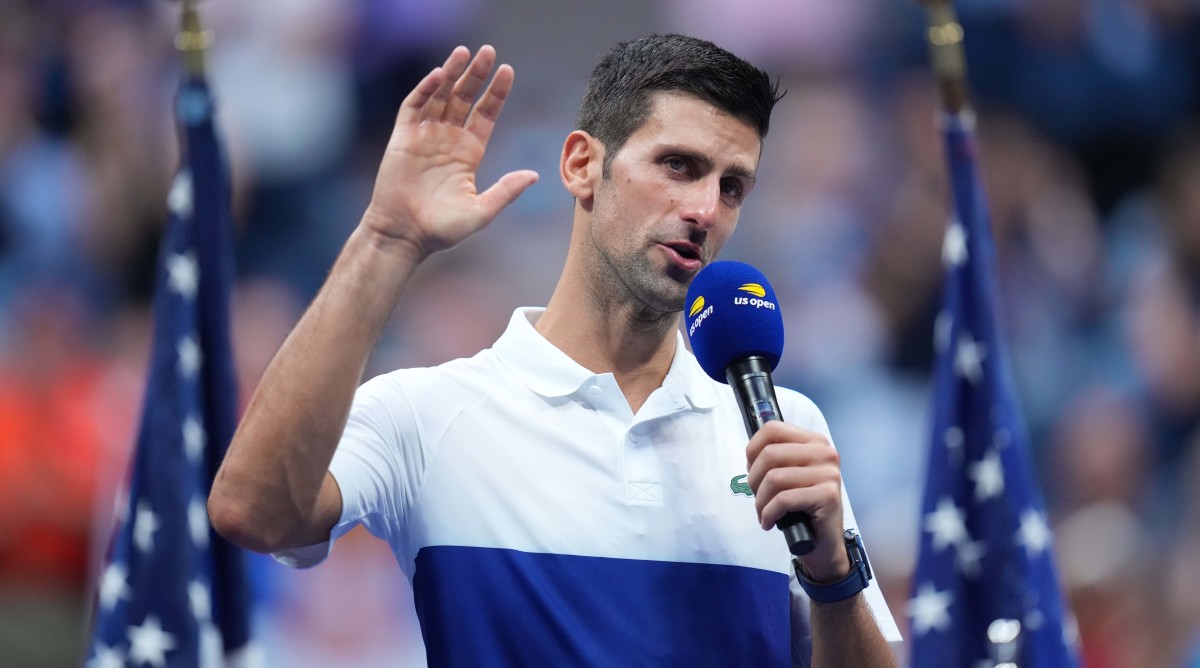How Will Novak Djokovic’s Labor Movement Impact Tennis?


History was on the line for Novak Djokovic at the 2021 U.S. Open, as the 34-year-old Serb was seeking his 21st major title—one that would snap a three-way tie with career-long rivals Roger Federer and Rafael Nadal—and the calendar Grand Slam. On Sunday, the historic achievement was thwarted by Russia's Daniil Medvedev in the final. But it should not be overlooked that Djokovic was attempting this incredible feat, all while leading a labor movement.
It was at the U.S. Open last summer that Djokovic and fellow player Vasek Pospisil officially announced the formation of the breakaway Professional Tennis Players Association (PTPA), targeting reforms such as increased prize money and greater transparency when it comes to revenue sharing.
Both had served on the ATP Tour's player council, with Djokovic most recently serving as its president. The governing body of men's tennis had provided its players with much: a livelihood, a pension fund, health benefits, things that can’t be accomplished without a volume of organized players. But they no longer felt their voices were being heard.
I know a few things about tennis uprisings. When Jack Kramer, Cliff Drysdale and I launched the ATP in 1972, we were trying to give an authentic voice to the players by creating a bona fide by-the-players, for-the-players union. Tennis as a professional sport was still a fledgling endeavor. The ITF, along with the various federations, controlled the players.
We didn’t want to tear down the establishment; we wanted to join them. We wanted to have a working relationship with the powers that be.
Our resolve was tested the following summer at the All England Club. In support of Yugoslav star Niki Pilić, who was being punished for refusing to represent his country in Davis Cup play, 81 players from the newly formed association, including defending champion Stan Smith, boycotted Wimbledon in protest. The tournament forged on, but we had made our point. As Kramer noted, “We might have lost the battle, but we won the war.”
Things evolved in 1988, when former Carter administration chief of staff Hamilton Jordan held the renowned "Parking Lot Press Conference" just outside the gates of the U.S. Open. Clinging to a duct-taped podium, Jordan, then CEO of the ATP, outlined a plan that would eventually see the fate of the tour decided by an equal number of player and tournament representatives. It became a partnership, but also less of a true players’ union.
That system held up for years, but somewhere along the line it became a tournaments-versus-players face-off. The truth is, you have to have strong leaders without conflicts of interest, or the partnership won’t work.
Today the PTPA claims a membership in the “hundreds,” though neither Federer nor Nadal are apparently among them. If Djokovic can convince the next generation of champions—Dominic Thiem, Daniil Medvedev, Alexander Zverev, Stefanos Tsitsipas, et al.—to join the cause, he might be onto something. More important, the PTPA must include the women’s tour in their plans, too, something they stumbled on from the onset. After all, the WTA boasts some of the most exciting and most popular athletes in the world (see Serena Williams, Naomi Osaka and fast-rising teens like Coco Gauff, Leylah Fernandez and Emma Raducanu).
Tennis is at its best at the combined men’s/women’s tournaments—the four Grand Slams, Indian Wells, Miami, Madrid, Cincinnati, etc. The ATP and WTA should join forces, on equal footing. I am not naive enough to think this will happen overnight, but now is the time to lay the groundwork.
Djokovic surely isn’t doing this for himself. He doesn’t need the money, having pocketed more than $151 million in on-court earnings, not to mention the endorsement dollars. He doesn’t need the distraction, either. No one would have blamed him had he stepped aside and let Pospisil do the heavy lifting as he pursued one of the most hallowed feats in tennis, something that hasn’t been matched in more than half a century, a sweep of the Australian Open, Roland Garros, Wimbledon and the U.S. Open. But he says with his success has come a huge responsibility, to ensure that the next generation of players, and those ranked No. 150 on down, can make a decent living.
If the PTPA is, as Djokovic insists, unified, it could use its leverage to demand reforms on behalf of the players that would not only deliver more financial support but alter the structure of the tour itself. However, unless the group is willing to take a stand for its principles when push comes to shove the way we did at Wimbledon back in 1973, the ATP won’t roll over. ATP chairman Andrea Gaudenzi knows any PTPA momentum could weaken the existing tour on many levels.
As it stands, we could be in for a long battle, a marathon five-setter.
Perhaps Djokovic and Gaudenzi would be better off sitting down face-to-face to find a way to implement reforms. Here are five ways the two sides might come closer together: I think it is critical that the ATP board overhaul its selection process; bring in independent but experienced voices with no skin in the game; extend term limits from three to four years, with the representatives unable to serve more than two terms; require the chairman to cast the deciding vote when there are deadlocks on major issues; and—last but not least—merge with the WTA board.
Wouldn’t that make the sport better for all of us? Wouldn’t that be historic?
More Tennis Coverage:
• 50 Parting Thoughts From the 2021 U.S. Open
• Emma Raducanu Wins U.S. Open With Historic Title Run
• U.S. Open's Atmosphere Brings Out Best—and Worst—in Tennis Stars
